
A SNARE Protein Involved in H+-ATPase Trafficking
Plant Physiology, Plant Physiology: On The InsideMembrane proteins are synthesized in the endoplasmic reticulum and are trafficked through the Golgi, from which they are sorted to the plasma membrane, tonoplast, or other target membranes. In all eukaryotes, secretory traffic to the plasma membrane is mediated by SNARE proteins. In Arabidopsis, three…
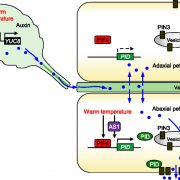
Insights into Thermonastic Leaf Movements
Plant Physiology, Plant Physiology: On The InsideMany plant species actively reorient their organs in response to dynamic environmental conditions. Petiole hyponasty is an upward movement of petioles driven by a higher rate of cell expansion on the lower (abaxial) compared with the upper (adaxial) side. Hyponasty is common among rosette species facing…

Addressing fundamental questions in plant science through synthetic biology
Plantae Webinars, Research, Research Skills, Webinars0 Comments
/
Addressing fundamental questions in plant science through synthetic biology
Recorded July 10, 2019
About This Webinar
In this seminar, we examined the role that synthetic biology can play in answering fundamental questions in plant science. In studying plants for the past hundred years, we’ve…
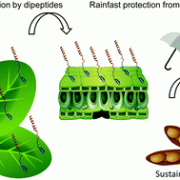
Plant Science Research Weekly: June 14th
WWR Full PostReview: N-degron pathway-mediated proteostasis in stress physiology
The rate of most biological processes is ultimately determined by protein activity levels, which of course are determined by rate of degradation or inactivation as well as production. Dissmeyer reviews the Cys/Arg branch of…
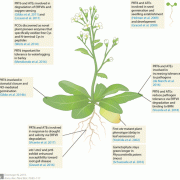
Review: N-degron pathway-mediated proteostasis in stress physiology (Annu Rev Plant Biol)
Plant Science Research Weekly
The rate of most biological processes is ultimately determined by protein activity levels, which of course are determined by rate of degradation or inactivation as well as production. Dissmeyer reviews the Cys/Arg branch of the N-degron pathway (previously called the N-end rule pathway) that contributes…
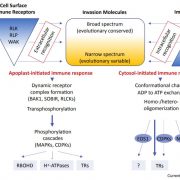
Review: Plant immunity, refining the model (Trends in Plant Sci and Curr Opin Plant Biol)
Plant Science Research WeeklyInteractions between plants and microorganisms occur in many different ways and on many different levels. Scientists have been attracted to this field of research because of the need to identify the agents causing infectious diseases in economically important crops. Models have been developed to describe…
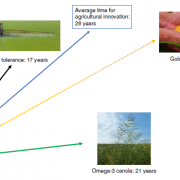
Review: The challenges of delivering genetically modified crops with nutritional enhancement traits (Nature Plants) ($)
Plant Science Research WeeklyDespite the widespread success of genetically modified (GM) crops resistant to herbicides and insect herbivory, GM food crops with nutritional enhancement traits remain on the fringes of commercial agriculture. In this review, Napier et al. examine the current state of GM food crops and the obstacles…
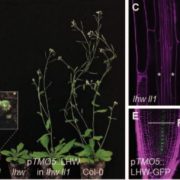
Evolution of vascular plants through redeployment of ancient developmental regulators (bioRxiv)
Plant Science Research WeeklyLand plants (Tracheophytes), utilize the well-developed vascular tissue for conducting water and other nutrients necessary for plant growth. In Arabidopsis and other land plants, the key player of vascular cell division is well characterized and this includes the TMO5-LHW (TARGET OF MONOPTEROS 5 –…

Pinstatic acid promoters auxin transport by inhibiting PIN internalization (Plant Physiol)
Plant Science Research WeeklyAuxin transport regulated by directional transporters such as PIN (PIN-FORMED) proteins ensures maintenance of proper auxin levels for growth and development. Plants modulate auxin flow by regulating the localization of PIN through exocytosis and endocytosis allowing recycling of PIN protein within a…

